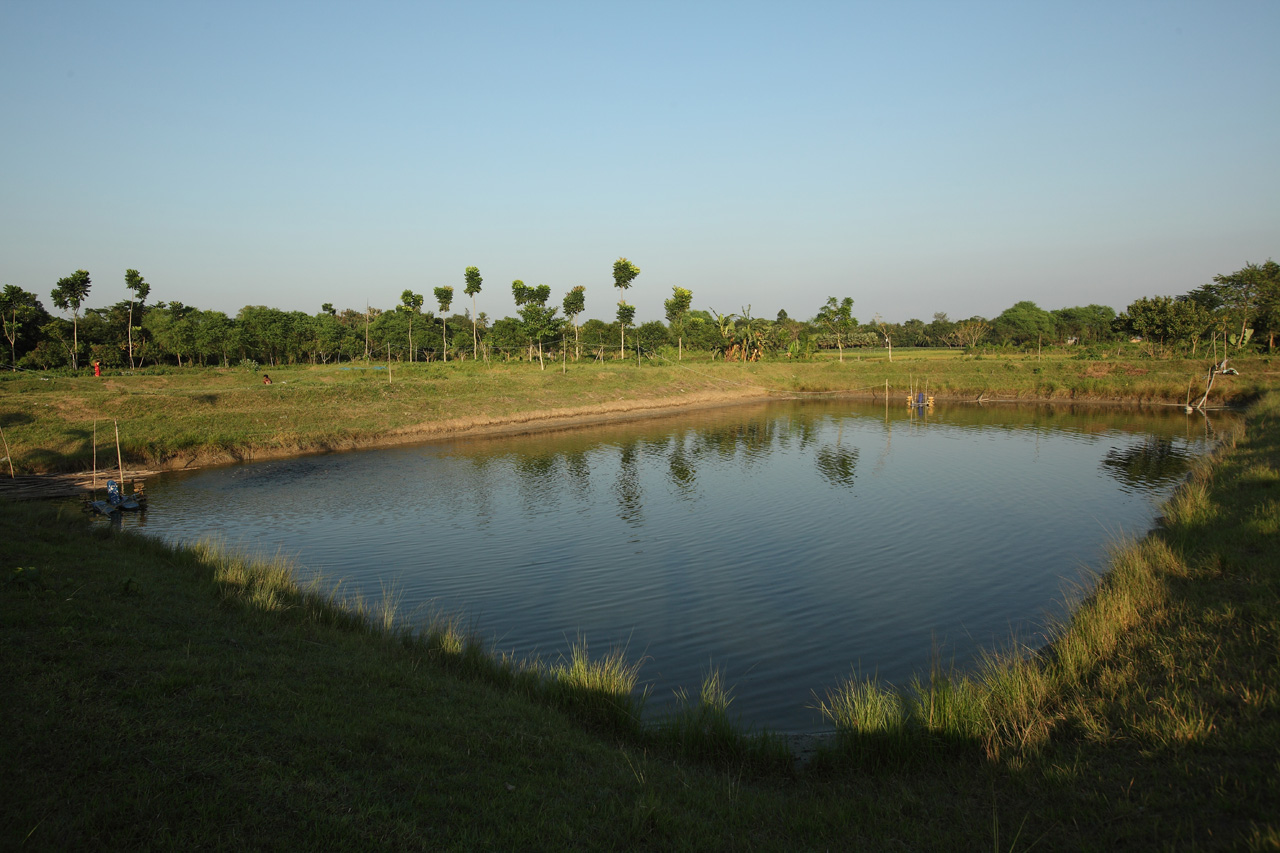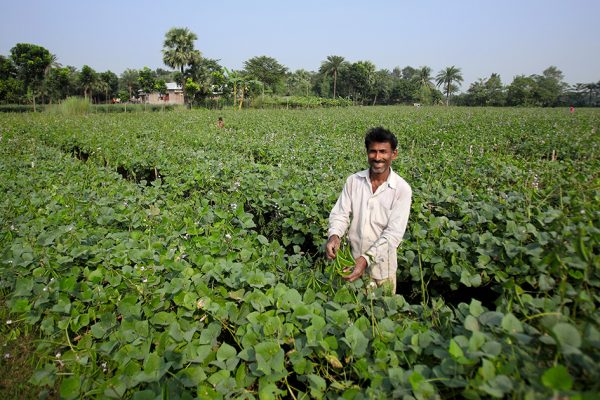Aquaculture for nutrition: Innovations from North Bengal
Reading Time: 3 minutes
Smallholder fish farming is unheard of in arid North Bengal. Learn how more families are gaining access to nutrient-rich fresh fish and raising incomes, with skill transfer and access to finance.
Aquaculture is mostly unheard of in North Bengal, where harsh droughts and unreliable rainfall add to high poverty rates. That is why when Asma Begum decided to invest the last of her late husband’s savings to transform her pond for fish farming, her neighbours were in awe.
Asma was struggling to make ends meet. Her husband had passed away from terminal illness two years back and she had no means of earning. Asma had lost the confidence that she would be able to give her two sons enough food and education.
After learning that the small pond in her homestead could be utilised for fish farming, something started clicking. Asma began attending the training sessions where she learnt modern techniques over conventional aquaculture practices. Soon after, she transformed her obsolete pond into a productive resource. Her family also started consuming more fish as part of their regular diet.
Read more: Building resilience amidst growing food insecurity crisis
Introduction of smallholder fish farming has been a boon for the participants of BRAC’s Women Empowerment by Contributing in Aquaculture and Nutrition (WE-CAN) project. Mainstreaming aquaculture is now a possibility in a region where fresh fish is scarce, and there is increasing participation of women farmers in the traditionally male dominated space.
As a nutrition sensitive intervention, the project focuses on both production and consumption of nutrient-rich fish, leading to the ultimate objective of increased income and diversified diet. Throughout the fish production cycle, beneficiaries receive technical assistance and inputs from local service providers. Nutrition counsellors offer information on the nutritional benefits of fish, and guidance on incorporating more fish into the household’s meals. Overall, the project has shown that skill transfer can open up unexplored paths for people.

Photo Credit:Sumon Yusuf©BRAC
Is it sustainable?
There are however, limitations to the sustainability and novelty of the skills and knowledge imparted on the beneficiaries. Skill transfer is sustainable only when market mechanisms exist. The demand for fresh fish exists but enabling factors on the supply side are inadequate.
Smallholder fish farmers – no matter how knowledgeable – cannot secure or scale up their income generating activities unless they have enough money.
Purchasing of fish seeds, fish feed and fertilisers require significant investment, which small households are often unable to afford. To ensure financial inclusion for this community and to make this intervention last, access to finance is an inevitable requirement.
This need is further amplified due to the high incidence of natural calamities in the region. When the worst flash floods in 60 years hit her village last September, Asma’s pond was washed away along with all the fingerlings and vegetables she had been growing – leading to losses worth an estimated BDT 100,000 (USD 1,175) and threatening her household’s dietary diversity. In a region where 30% of the population live on less than USD 1.9 a day and malnutrition is much higher than national averages, losses such as Asma’s caused a great deal of hopelessness and despair among the community.
Read more: Clients narrate a powerful account of the impact of microfinance
A need to meet this gap has now led to a collaboration between two of BRAC’s largest programmes. BRAC Health, Nutrition and Population Programme (HNPP) is partnering with the Microfinance Programme to pilot seasonal aquaculture loans to 2,000 smallholder fish farming households enlisted under the WE-CAN project, in 20 unions in Rangpur and Gaibandha districts.
Seasonal loans for livestock and crop cultivation are some of the most popular financial products offered by BRAC Microfinance. Repayment is highly convenient, as borrowers can opt for one shot payments at the end of the maturity period instead of weekly or monthly instalments. Venturing into aquaculture adds another innovative product to Microfinance’s diverse portfolio through expanding the spectrum of financial inclusion. These seasonal aquaculture loans will enable recipients to reinforce their facilities, invest in high quality inputs and scale up productivity.
The benefits of this partnership at the grassroots level are three-fold. Women being the recipients of the loans will gain greater access and control over utilisation of financial resources, eventually contributing to their empowerment. These loans will also enable them to diversify their livelihoods, as they can sustainably increase fish production while minimising potential income shocks. Most importantly, they will have access to greater quantities of fish for household consumption, eventually improving their nutritional status in the long run.
Read more: Celebrating the stories of 2 million women
Such partnerships in geographically disadvantaged areas can open a window for financial support to other nutrition sensitive activities as well. Like many other instances, this initiative goes on to show financial support is not necessary throughout the year if offered at the time of highest need. The right amount of support at the right time most often yields the greatest promise.
Syeda Nafisa Nawal is a Partnerships and Communications Manager and Sumaia Taskeen is a Sector Specialist engaged in the WE-CAN project at BRAC’s Health, Nutrition and Population Programme.





